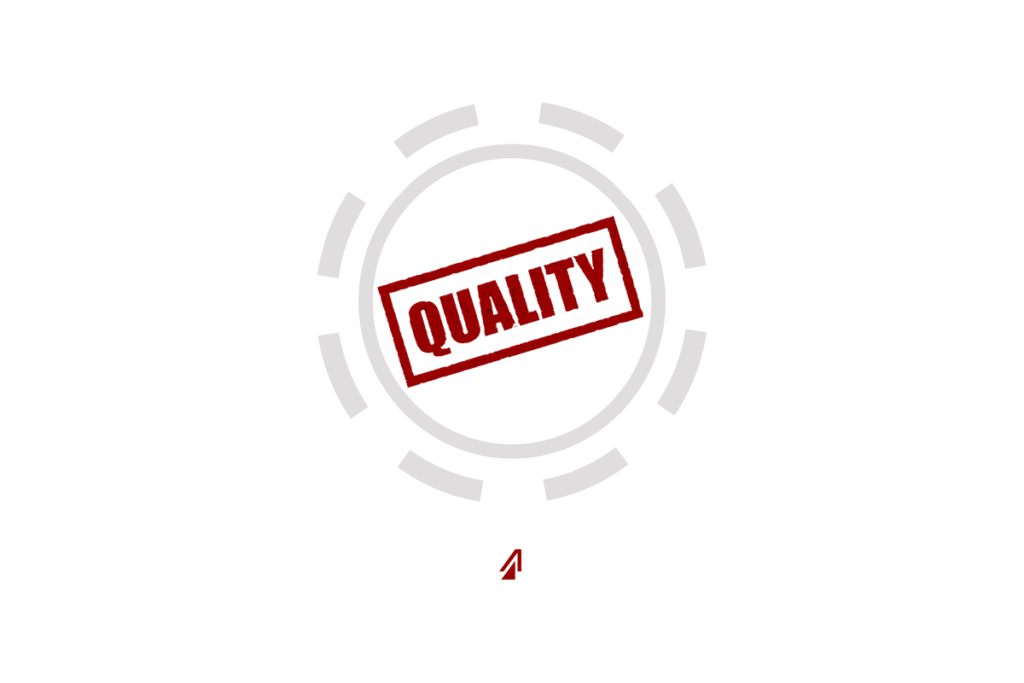ISO, the International Organization for Standardization, released the 5th version of their 9001 quality standard certification in late 2015, after three years of expert research and revision. The ISO 9001:2015 standard has revised the previous 2000 and 2008 editions by focusing more attention on process management rather than documentation. An ISO certification marks a company as customer-focused and continually improving. To meet the ISO 9001:2015 standards, companies need to understand and utilize the four main focuses of the new standards: the Process-Based Approach, PDCA cycle, Risk-Based Thinking, and Continuous Improvement.
Processed-Based Approach
The Process-Based Approach is a method for companies to evaluate their systems by looking at the individual processes that make up those systems. They will also determine how each of those processes affects the system as a whole. ISO 9001:2015 states, “Understanding and managing interrelated processes as a system contributes to the organization’s effectiveness and efficiency in achieving its intended results.” A company will act most efficiently and effectively if each of its departments work well together.
Each department in a business has its own core processes that pose a severe risk to the health and welfare of the company if they are not performed correctly. The Processed-Based Approach will evaluate how each department’s core processes affect other departments and their core processes. No department is independent of the company, so the success or failure of each process will have a large effect on the company as a whole. Users need to define, understand, and record how individual processes affect other departments to determine if that process needs updated or corrected. One way ISO suggests managing the interrelated processes and systems is using the PDCA Cycle.
Plan-Do-Check-Act Cycle
The Plan-Do-Check-Act Cycle is a continuous improvement method that helps users go beyond just complying with standard business requirements, but instead pushes them to perform even better. The cycle is made of four steps:
1. Plan – Quality Assurance users take this step to establish the goals and objectives for a system and the network of processes that make it up. This is also where they gather the resources needed to achieve the desired results or customer requirements and discover the risks and opportunities the process improvement will provide.
2. Do – Users will test the planned process change.
3. Check – The changes are evaluated to determine their impact. Users will monitor and record the effect the changes caused and report what they learned.
4. Act – Users can take actions on what they learned and make further improvements as necessary.
Companies will use the PDCA Cycle indefinitely to improve their various processes. Many companies will do annual process evaluations to maintain ISO certification. (ProTrans performs both monthly grid process walks and monthly Quality Team reviews.) This cycle can be applied to any process at any company. Its simplistic, user-friendly, design was implemented by ISO 9001:2015 to help more companies, regardless of size or industry, improve their processes to better serve their customers and stakeholders.
Risk-Based Thinking
Risk-Based Thinking makes companies take the risks that their customers and stakeholders experience into account when evaluating their potential opportunities. Companies will generally look at how the risks affect process management, internal employees, customer satisfaction, and financial stability and will assess the risk by utilizing several different tools. Three of these tools are metrics-to-goals, lean tools in grid walks, and reviewing customer issues.
Metrics-to-goals is the simplest tool; it compares actual performance metrics to a process’s stated goal. Depending on performance, the metrics can highlight if making a change is worth the risk or if not changing is the correct course of action.
Lean tools, like the SIPOC (Supplier-Input-Process-Output-Customer) model is another way to evaluate risk. SIPOC is a process map that shows a process’s current state or effectiveness and is useful in the grid walk process.
Third is reviewing customer issues. ISO 9001:2015 expresses the usefulness of customer feedback as a way to assess risk. These can be existing customer issues or trending issues, but both show real-world issues that correlate to the risks of changing the process.
These three tools are efficient ways for a company to look at itself and decide whether or not change is prudent. Companies will need organizational knowledge (information needed to successfully run a business’s processes) in order to correctly evaluate if the opportunities outweigh risks and continually improve.
Continuous Improvement
The process of Continuous Improvement is vital to keep companies relevant and in touch with their customers. Companies need to listen to their customers to adequately meet their needs and exceed their expectations. Customer feedback is critical – whether for praise or corrective action, to help companies see areas of improvement.
At ProTrans, processes like CPARs (Corrective Preventative Action Request) are a way for customers to signal the need to improve a process and can highlight certain processes that are not efficient or effective for these customers. Other avenues like grid process walks are ways that companies can internally audit themselves to see if they are performing at their best for their customers.
Whatever process companies use to evaluate themselves, continuous improvement is necessary. The global market is changing constantly, and companies need to improve to meet the new demands. With the growing number of available service options in the marketplace, companies can set themselves apart from their competition with their service excellence and desire to improve. The ISO 9001 certifications are proof of that excellence. The standards set by ISO 9001:2015, “provide guidance and tools for companies and organizations who want to ensure that their products and services consistently meet customer’s requirements, and that quality is consistently improved.”
ISO standards are the benchmark for company quality. Their certifications are a testament to companies that can continuously improve and consistently satisfy their customers. Improving themselves, they implemented ISO 9001:2015 to keep up with the changes in global markets and advanced challenges businesses face today. The new standard focuses primarily on process management performance, and can be evaluated with a Process-Based Approach. Companies can improve their processes using tools like the PDAC Cycle and Risk-Based Thinking to help highlight areas needing improvement and helping determine what changes need to be made. The updates to ISO 9001 can leave customers and stakeholders assured that the certification holders are quality-minded and are concerned with operating beyond compliance.




